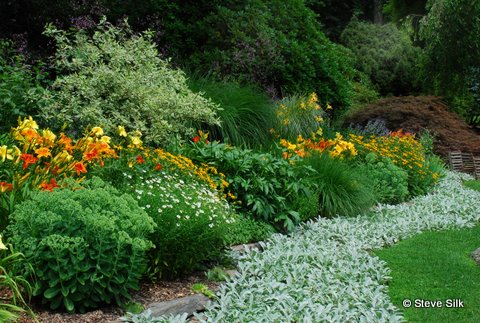
I’ve gotten a lot of inspiring ideas and great garden techniques from Sydney Eddison over the years. She’s given me all kinds of ways to use color, combine plants and minimize garden maintenance. But one of her best ideas was also the simplest. Once when I was fretting about a garden Open Day, she said to just make sure the edges are crisp. “If the edges look good,” she said, “you can get away with a multitude of sins.” And you know what? She’s right. It doesn’t even have to be any kind of traditional edge, as her margin of lamb’s ears shows.
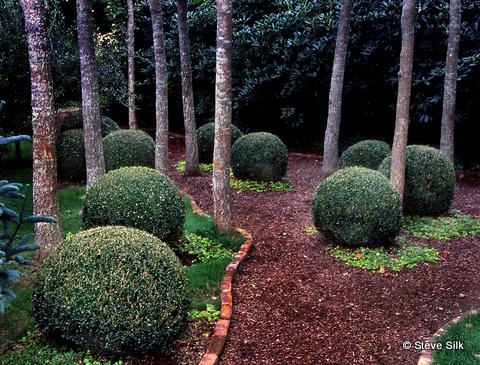
One of the primary structural aspects of almost any garden is the shape of its beds and borders, and nothing better defines those shapes than the lines that give them a sense of order. They are, so to speak, the border’s border. So, to tweak those lines is to reinforce those fundamental forms. And using some kind of consistent edge throughout the garden helps to impose a sense of unity to the overall garden. These bricks add so much to the structure of this whimsical scene at Bob Dash’s Madoo onLong Island.
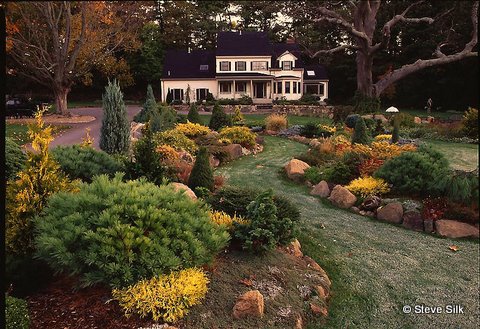
In my own garden, all the beds are edged with stone. I kind of borrowed the idea from Nancy Britz’s garden, above. It was really never my intent at the outset, but around here you can’t dig a hole without hitting rock, and as the beds of emerged from the property’s primordial chaos, the piles of stone grew. And grew. And grew. I had to find something to do with them. The choices were simple-either haul them off somewhere, or find a way to use them more in less in situ. The latter option seeming less labor intensive. I started using those stones to edge the beds, paths and ultimately just about anything that had form. At first I sometimes doubted the wisdom of my decision, but no longer. It provides a kind of primitive rustic touch that’s in keeping with the spirit of the garden. It’s not maintenance free-weed whacking is definitely a chore. It takes longer to do that than it does to mow the lawn. But it’s easier than maintaining a spade-cut edge, like the razor-cut one at Raymond Hagel’s Westport, Ct garden (below), that’s for sure.
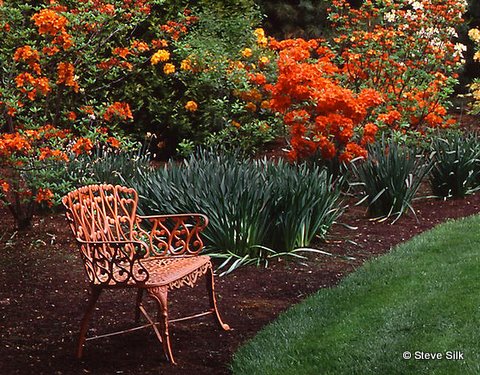
Whatever the edge, keeping it crisp will provide a quick clean up for that garden–and easily distract viewers from a few weeds and such. In fact I ‘ve learned the swiftest way to make the garden look good and to emphasize its overall form is to address the edges and to make the paths between them immaculate. Really, all I’m doing is sharpening the lines and defining the forms. But it works wonders. Let’s look at some edges.
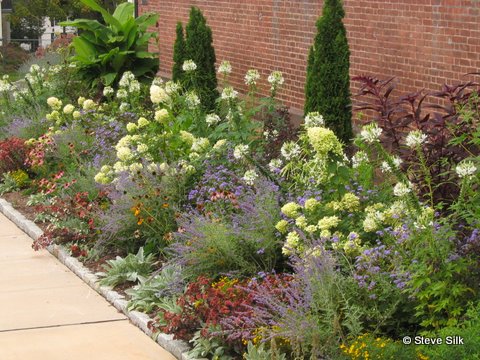
 Belgian block works especially well as an edge for paved areas. I used it for a garden I did at a local school; Sue Webel used it along a patio at her Wethersfield, Ct garden. Block is a pricey option, but it is nice and solid. Very solid. And it underscores the basic advantage, labor-wise, of most kinds of edging–once it’s in the ground, it’s in for good, and the materials are very unlikely to require any further attention.
Belgian block works especially well as an edge for paved areas. I used it for a garden I did at a local school; Sue Webel used it along a patio at her Wethersfield, Ct garden. Block is a pricey option, but it is nice and solid. Very solid. And it underscores the basic advantage, labor-wise, of most kinds of edging–once it’s in the ground, it’s in for good, and the materials are very unlikely to require any further attention.
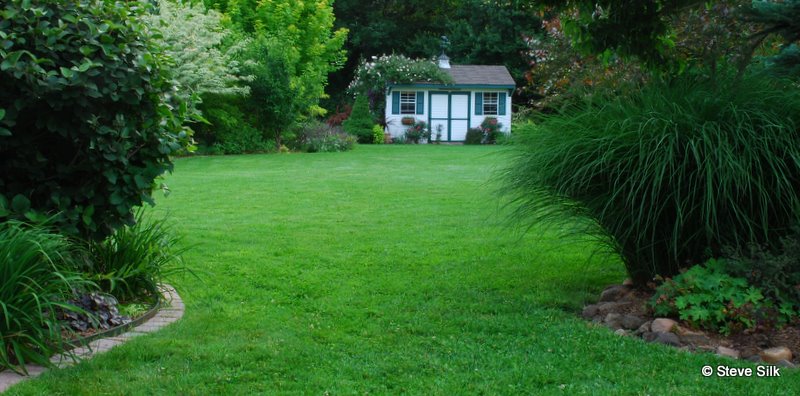
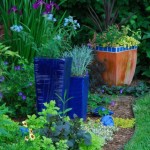 Flexible plastic or metal edging, once installed, keeps an area looking good and requires virtually no maintence. An even easier variation is to edge that edge with a row of reclining brick pavers to create a mowing edge, a track for the lawnmower’s wheels. Yahoo! No weed whacking! These scenes are from Les and Monique Anthony’s Wallingford, Ct garden–I posted about it earlier at Clatter Valley.
Flexible plastic or metal edging, once installed, keeps an area looking good and requires virtually no maintence. An even easier variation is to edge that edge with a row of reclining brick pavers to create a mowing edge, a track for the lawnmower’s wheels. Yahoo! No weed whacking! These scenes are from Les and Monique Anthony’s Wallingford, Ct garden–I posted about it earlier at Clatter Valley.
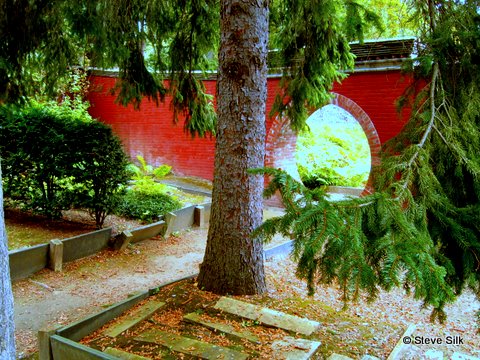
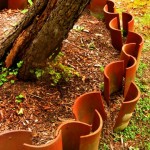 Lastly, a couple cool and different edgings from that font of innovative design, Naumkeag, Fletcher Steele’s masterpiece in the Massachusetts Berkshires. Love the bluestone edges and the old roofing tile edges, both in the Oriental garden there. It’s an edgy place–in the very best ways.
Lastly, a couple cool and different edgings from that font of innovative design, Naumkeag, Fletcher Steele’s masterpiece in the Massachusetts Berkshires. Love the bluestone edges and the old roofing tile edges, both in the Oriental garden there. It’s an edgy place–in the very best ways.
